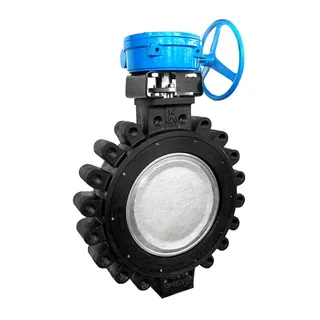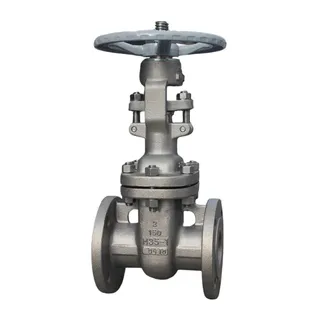In the industrial field, valves are indispensable components in piping systems. They control the flow of fluids and ensure the smooth progress of the production process. As one of the most common valve types, globe valves play an important role in many application scenarios due to their unique structure and function. This article will explore in depth the selection principles of globe valves, the different types of globe valves, and their applicable scenarios, helping you better understand and choose the right globe valve.
A globe valve is a valve that controls the flow of fluid by moving the disc along the centerline of the valve seat. Its sealing surface can be flat or conical. The motion form of the valve stem usually has two types: rising-stem type (the stem rises and falls, while the handwheel does not rise) and rising-rotating stem type (the handwheel and the stem rotate and rise together, and the nut is set on the valve body). The main characteristics of globe valves include:
Fully open and fully closed: Globe valves are usually only suitable for fully open and fully closed states, not for regulation or throttling. This means that when it is fully open, the fluid can flow freely, and when it is fully closed, the flow of fluid can be effectively stopped.
Simple structure: Compared with gate valves, the structure of globe valves is simpler, and manufacturing and maintenance are more convenient. This makes them very popular in industrial applications, especially in occasions requiring frequent maintenance and replacement.
Strong wear resistance: The sealing surface of the globe valve is usually specially treated, with good wear resistance and corrosion resistance, and can adapt to various complex working conditions.
The selection of suitable globe valves should be determined according to the specific working conditions and medium characteristics. The following are some common selection principles:
In high-temperature and high-pressure pipelines or devices, such as high-temperature and high-pressure pipelines in thermal power plants and petrochemical systems, pneumatic globe valves are ideal choices. Pneumatic globe valves are driven by pneumatic actuators to achieve fast and reliable opening and closing. They can withstand higher temperatures and pressures to ensure the safe operation of the piping system.
When the pipeline has no strict requirements for flow resistance, straight-flow globe valves are a good choice. The valve stem and channel of straight-flow globe valves are at a certain angle, and the sealing surface of the valve seat and the inlet and outlet channels are also at a certain angle. This structure makes the fluid almost unchanged in flow direction when passing through the valve, thereby reducing flow resistance. The valve body can be made as an integral type or split type. The split type is convenient for maintenance and is especially suitable for pipelines with coking and solid particles.
For small pipelines, such as those with nominal diameter ≤50 mm, if flow or pressure regulation is required but the accuracy requirements are not high, pneumatic globe valves are suitable choices. In addition, needle globe valves, due to their high-precision needle-shaped heads and fine-pitch stem threads, are suitable for precise flow control and are often used in sampling valve applications.
In different industrial productions, globe valves of specific types should be selected according to the properties of the medium and process requirements. For example, in small and large fertilizer production in synthetic industries, high-pressure angle globe valves or high-pressure angle throttle valves with nominal pressure PN160 (16MPa) or PN320 (32MPa) should be selected. In the desiliconization workshop of alumina Bayer process production, pipelines prone to coking should use split-body, removable seat, hard alloy sealing straight-flow globe valves or straight-flow throttle valves.
In urban water supply and heating projects, small-diameter pipelines (such as those with nominal diameter less than 150 mm) can use pneumatic globe valves, balancing valves, or plunger valves. These valves have simple structures, are easy to operate, and can meet the requirements of urban water supply and heating systems.
For some special media, such as high-temperature steam, heat transfer oil, hydrogen, and oxygen, bellows globe valves should be selected. Bellows globe valves achieve sealing through the bellows structure to prevent the process fluid from corroding the valve stem. They are suitable for pipelines containing flammable, explosive, or toxic media. For cryogenic liquid oxygen, liquid nitrogen, liquefied petroleum gas, and LNG media, long-neck cryogenic globe valves should be used to ensure sealing performance under low-temperature environments. For acidic and alkaline media, stainless steel globe valves or PTFE-lined globe valves are recommended, as these valves have good corrosion resistance and can adapt to various acidic and alkaline environments.
Globe valves come in many types, each with unique designs and functions suitable for different working conditions and media. Correctly selecting the appropriate type of globe valve is crucial to ensuring efficient and safe operation of the piping system.
Needle globe valves are special types of globe valves mainly used for precise flow control. The valve disc is usually integrated with the valve stem and has a highly precise needle-shaped head that fits with the valve seat. The thread pitch of the valve stem is finer than that of ordinary globe valves, and the valve seat bore is usually smaller than the pipeline size. Therefore, it is usually only applicable to small-diameter pipelines and is more commonly used as sampling valves.
The stem and channel of straight-flow globe valves are set at a certain angle, and the sealing surface of the valve seat and the inlet and outlet channels also have a certain angle. This design allows the fluid to flow with almost no change in direction, resulting in minimal flow resistance. The valve body can be made as an integral type or a split type, and the split type is convenient for maintenance. The sealing surfaces of the valve seat and disc can be hard alloy welded, improving erosion and corrosion resistance. These valves are suitable for pipeline control in alumina production processes and also for pipelines containing coking and solid particles.
The greatest advantage of angle globe valves is that they can be installed at pipeline corners, saving a 90° elbow and simplifying operation. Therefore, such valves are suitable for use in ammonia synthesis systems of fertilizer plants and in refrigeration systems.
The opening and closing part of PTFE-lined globe valves is a plug-type disc with a flat or conical sealing surface. The disc moves linearly along the centerline of the fluid flow. It is suitable for various concentrations of aqua regia, sulfuric acid, hydrochloric acid, hydrofluoric acid, and organic acids, as well as strong acids, strong oxidants, various concentrations of strong alkaline organic solvents, and other corrosive gas or liquid media within the temperature range of -50°C to 150°C.
Insulated globe valves are mainly used in petroleum, chemical, metallurgical, and pharmaceutical systems to transport high-viscosity media that solidify at room temperature. The insulation jacket is welded between the two flanges of the valve, and the side and bottom of the valve are provided with two connection ports for the insulation jacket. The straight-flow insulated globe valve is especially suitable for pipelines in the chemical and fertilizer industries, and the steam introduced into the jacket can prevent medium crystallization.
Bellows globe valves, also called bellows-sealed globe valves, form a metal barrier between the fluid medium and the atmosphere through automatic roll welding, ensuring zero leakage of the valve stem. Inside, the stainless steel bellows is welded at the lower end to the valve stem to prevent process fluid corrosion. The other end is set between the valve body and bonnet to form a static seal. This double-seal design ensures that if the bellows fails, the stem packing prevents leakage. Bellows globe valves are suitable for pipelines with steam, flammable, explosive, heat transfer oil, high-purity, or toxic media.
Plunger valves use radial sealing, achieved by two elastic sealing rings sleeved on a polished plunger. The two sealing rings are separated by a sleeve ring and pressed tightly around the plunger by the load applied on the bonnet through the body-bonnet connecting bolts, ensuring sealing. The valve body is made of carbon steel, the plunger of Cr13 stainless steel, and the sealing ring of flexible graphite, suitable for water, steam, and oil pipelines. If the body and plunger are made of acid-resistant stainless steel and the sealing ring is made of PTFE, they can be used for acid and alkali corrosive media. The advantages of plunger valves are reliable sealing, long service life, and easy maintenance; the disadvantage is slower opening and closing. These valves are widely used in urban systems, such as water and steam pipelines in municipal heating networks.
The inlet and outlet channels of straight-through globe valves are in the same direction (180°). This form reduces flow disruption, resulting in smaller pressure loss through the valve. It relies on stem pressure to press the disc and seat sealing surfaces tightly together, preventing fluid flow. During opening and closing, friction between sealing surfaces is minimal, wear resistance is good, and the valve has small lift and good manufacturability. Compared with gate valves, globe valves have simpler structures and are easier to manufacture and maintain. It is one of the most widely used valves in industrial sectors.
As an important type of industrial valve, the globe valve is widely used in many fields due to its simple structure, easy operation, and good sealing performance. Selecting a suitable globe valve must be based on specific working conditions and medium characteristics. By understanding different types of globe valves and their applicable scenarios, you can better choose the appropriate valve to ensure stable pipeline operation and smooth production processes. Whether in high-temperature and high-pressure petrochemical systems or in urban water supply and heating projects, globe valves play an indispensable role in industrial production.



